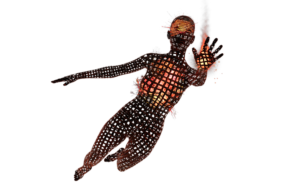 I’ve noticed in the last few months an increase in clients coming to me because of migraines. For those who haven’t ever experienced a migraine, it’s a debilitating, throbbing, stabbing, and shooting pain that localizes typically to one area of the head. For some, functioning isn’t even an option and medications don’t even seem to provide relief. Approximately 15% of the population suffers from migraines (Vos, 2010)
I’ve noticed in the last few months an increase in clients coming to me because of migraines. For those who haven’t ever experienced a migraine, it’s a debilitating, throbbing, stabbing, and shooting pain that localizes typically to one area of the head. For some, functioning isn’t even an option and medications don’t even seem to provide relief. Approximately 15% of the population suffers from migraines (Vos, 2010)
I remember back in my undergraduate studies about 20 years ago taking a class from one of the Biology professors. She woke up to a diet soda every morning because she needed the caffeine to try to keep the migraines from occurring. Some days it worked and other days it did not. Those days were the hardest for her. I know many of you reading this can relate to trying anything and everything you can think of to try to stop the migraines from happening or wishing someone would simply chop your head off to make the pain stop.
Migraines have many points of origin, but the three most common that I see are hormonal imbalances, food intolerances and magnesium deficiency. It’s not enough to look at only one area of the body or one system of the body though! The body doesn’t function independently from one part to the next. Imagine if your brain was trying to send a signal to your legs to walk, but the legs weren’t responding to the brain at that time. Instead, they decided 20 minutes later to just start walking, and the brain had no control over them. Kind of sounds like something my son would have done at age 3! So when you consider what the origin of your migraines may be, this is where I advocate for protocols that involve an examination of all of the systems collectively.
I know, for some, that the medication route makes the most sense. It’s quicker, easier, and sometimes it works. But what about those other times when things don’t work – or you miss work? What about those special events that you missed out on because you were laying in a dark, cool room just hoping that this time the medication will work and you can get back to your life? I know that’s not how you want to spend your life and, truthfully, you don’t have to!
There’s also a darker side to unchecked migraines. Those who experience migraines are also at an increased risk of heart attacks, atrial fibrillation, atrial flutter, and strokes. In a recently published study, researchers found that those who experienced an aura with their migraines were at a greater risk of  cardiovascular complications (Adelborg, 2018) Most of the participants in the study also noted that their migraines began shortly after puberty. As an aside, puberty is a time of dramatic hormonal changes as well as a time that is often devoid of nutrients and proper food intake. I remember my teen years of living off of one bag of cheddar and sour cream chips and a soda for the entire day.
cardiovascular complications (Adelborg, 2018) Most of the participants in the study also noted that their migraines began shortly after puberty. As an aside, puberty is a time of dramatic hormonal changes as well as a time that is often devoid of nutrients and proper food intake. I remember my teen years of living off of one bag of cheddar and sour cream chips and a soda for the entire day.
By reducing inflammation, identifying the causative factors, and taking corrective action, your migraines don’t have to take you down the path of cardiovascular complications! The trick is truly to find out what is causing them for you and then addressing them in personalized 4-step plan of action that consists of:
1. Investigate (causes)
2. Evaluate (labs and protocol)
3. Remediate (nutritional deficiencies)
4. Appreciate (gratitude training and maintenance)
[maxbutton id=”1″ url=”https://www.neogenesisnutrition.com/book-an-appointment/” text=”End My Migraines NOW!” ]
Adelborg, K., Szépligeti, S. K., Holland-Bill, L., Ehrenstein, V., Horváth-Puhó, E., Henderson, V. W., & Sørensen, H. T. (2018). Migraine and risk of cardiovascular diseases: Danish population based matched cohort study. bmj, 360, k96.
Vos T, Flaxman AD, Naghavi M, et al. Years lived with disability (YLDs) for 1160 sequelae of 289 diseases and injuries 1990-2010: a systematic analysis for the Global Burden of Disease Study 2010. Lancet2012;380:2163-96. doi:doi:10.1016/S0140-6736(12)61729-2pmid:23245607

